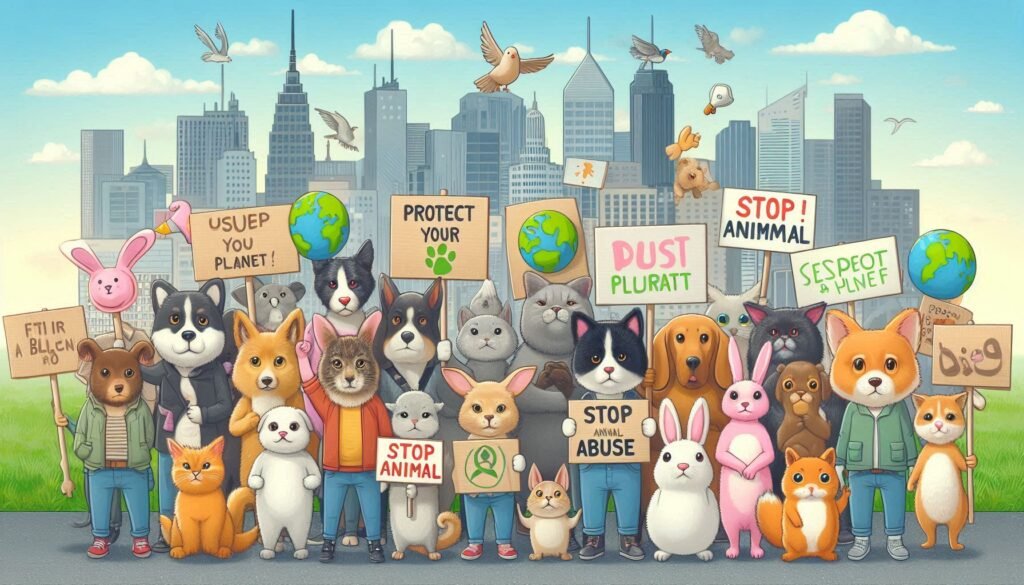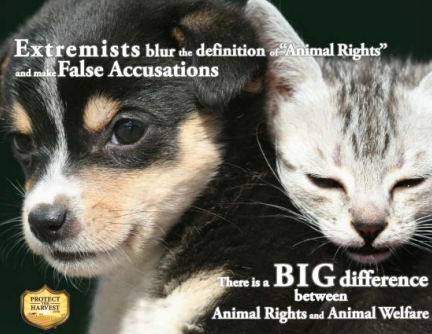
Where does the Law lack? Is it the insufficiency of Animal Protection laws that is leading an imbalance?
I. Introduction
In a world where justice, law and equity are the main conscience, stark contrast prevails between the rights of animals and the harsh reality of animal abuse. Both animal rights and animal abuse are the two polar opposite concepts of one another, making it a complex aspect of how society or people as a whole view them. For centuries humans have embraced the practice of sacrificing animals in the name of God, traditions or religion in ceremonies. From ending their lives in a laboratory for research purposes to cruel means of using them for entertainment. Are their lives so cheap that it can be ended anytime, anywhere, according to human needs, wants and desires? People often forget the fact, it’s not just us or it’s not just only for us, there are other creatures too, who shares the same thoughts, same feelings and most importantly same pain, just as much as we do. Even they have their family, their own little world that they share. People haven’t always been there for each other, but animals have always been there for us. No matter how much we shower them with pain, hatred and beatings, all they give us in return is
love. Rather than people, it’s the animals that wait for our return. Home, where a wiggling tail awaits is where love resides and laughter never ends. Who in the world would love us just as much as an animal or your pet does? It’s the animals that love us when we forget to love ourselves. But what do they get in return? People may question me – if not animals then whom should we use as an alternative, especially in the case of experiments? In that case why not a raper or a murderer? Why to take the lives of innocents when such burden of our society is still alive?
However, as time passed, societies evolved as a result of which some people realized the fact that laws are a great means to protect the rights of animals. Therefore, practices that was once seen to be accepted and normal are now seen as animal abuse, encouraging the need for change and reflection. As we navigate this complex landscape of animal welfare and their rights, a question arises: Where does the law fall short? Is it the insufficiency of animal protection law that perpetuates the cruel mistreatment of our furry friends or is it a deep systematic issue? This article delves into the heart-wrenching disparity between animal rights and animal abuse, seeking answers to
these pressing questions and exploring an urgent need for legal reform to safeguard the wellbeing of our precious creatures.

II. Objectives & Scope of Animal Rights
One must not forget the fact that humans aren’t the only living creatures living on this planet.
Animal Protection Laws were hence, needed to prevent the infliction of unnecessary pain, harm
or suffering on animals, mostly given by us, humans. The main objectives and scope of animal
protection laws are –
Objectives
1. Prevention of cruelty – Protect animals from intentional harm, pain, abuse and negligence.
The Prevention of Cruelty to Animals Act of 1960, prohibits cruelty and defines what
constitutes cruelty.
2.Welfare Promotion – Ensure animals physical and mental well-being by addressing concerns about animal welfare, such as poor living conditions, inhuman treatment and inadequate love and care.
3.Ethical Considerations – To recognize animal’s sentience, emotions, feelings and their rights, aligning with societal values and moral principles.
4.Conservation – Preserve and protect the endangered species and their habitat and maintain ecological balance.
5.Education and Awareness – Education can be a great tool to promote understanding, empathy and responsible behaviour towards animals and spread awareness among people in the society
Scope
1. Animal Cruelty Laws – Address intentional harm, abuse and negligence of animals before the Court. The Indian Law criminalizes cruelty to animals including beating, kicking, torturing, mutilating and killing.
2. Animal Welfare Laws – Covers treatment, care and living conditions for domestic, farm and wildlife animals. The Constitution of India reflects the principle of non-violence (ahimsa) and compassion for all living creatures.
3. Agricultural Laws – Covers animal welfare in farming, slaughter and transportation.
4. Conservation Laws – Focus on protecting the endangered species, habitats and ecosystems
5. Wildlife Laws – Protect wild animals, their habitat and migration routes.

III. Addressing the critical issues in Animal Rights
Some advocates argue that animals, are sentient beings who are capable of experiencing the
same pain & suffering as humans, and deserving legal protections that recognizes their intrinsic
value & rights. This has led to birthing of new laws and amendments regarding protection of
animal rights & laws upbringing their value & importance in our society.
Reasons why animal life is endangered
The first and primary reason is due to habitat loss, which is the main reason for higher extinction rates.
1. Over exploitation of wildlife for commercial purpose – It involves the unsustainable harvesting of species, driven by demand for products like ivory, fur & exotic pets. Activities such as poaching & illegal wildlife trade threaten endangered species & disrupt eco-systems, leading to significant biodiversity loss
- Laws that have been enacted to address such issue – To address this the Judicial body & the parliamentary head of India have imposed laws regarding such issue, such as:
- The constitution of India, 1960 – It make it the “duty of envy citizen of India to protect & improve the natural environment, including forests, lakes, rivers & wildlife, and to have compassion for all living creatures”. It is supplemented under Directive Principles of State Policy under Article 48A
2. Human – animal conflict in India – Conflicts between humans & animals has become increasingly pressing issue as the country grapples with a rapidly growing population & expanding urbanization which encroach upon wildlife habitats. Species such as, elephants, leopards, and wild boars are common in conflict between humans and animals, causing damages to infrastructures, destruction of crops & even loss of human life.
Laws that have been enacted to address such issue – Several laws & regulations have been imposed to promote wildlife conservation and to ensure the protection of both wildlife & human interests. Some legal framework are as follows:
a. Wildlife Protection Act (1972) – Section 11 provides for the establishment of Wildlife Advisory Boards to advise on matters related to wildlife conservation & human – wildlife conflict mitigation. Section 38 empowers the state government to declare certain areas as protected which may include buffer zones to minimize conflict.
b. Forest Conservation Act (1980) – An act to provide for the conservation of forests & for matters connected therewith. Section 2 of the act prohibits the diversion of forest land for non-forest purposes without prior approval, thereby protecting wildlife habitats & reducing humans – animal conflicts die to habitat loss.
3. Introduction of harmful non-native species – The introduction of non-native species poses a significant threat to ecosystems, leading to decline of many native species. The dominance of non-native species over native species mostly arises due to the lack of natural predators in their new habitats, allowing their population to grow unchecked.
Laws that have been enacted to address such issue – India has recognized the threat posed by invasive species and has enacted several laws & regulations aimed at managing and controlling their spread.
a. The Biological Diversity Act, 2002 – This act aims to protect biological diversity in India and include provisions for the regulation of access to biological resources. It empowers the National Biodiversity Authority (NBA) to take measures for the conservation of diversity, which includes addressing the impact of invasive species.
IV. Where does the law lack
Animal protection laws have come a long way in many parts of the world, yet significant gaps remain that leave countless animals vulnerable. There are still illegal poaching of animals, like rhinoceros, and destruction of forests for increasing human infrastructure
Example – In Assam, Guwahati, Deepor Beel, which is home to large varieties of bird, as well as, endemic bird species. And some migratory birds also visit this region every year during winter period. And due to usurped of their habitat by concrete (i.e rapid urbanization) has destroyed their biodiversity and has caused major threat for the survival of the birds living in the area.
Thus, there shall be more strict penalties, public awareness, consistent enforcement to convey these issues and prevent from future abuse.

V. Case Law
Animal Welfare Board of India v. A. Nagaraja and Ors. (2014), Case no. – Civil Appeal No. 5387 of 2014.
Court – Supreme Court of India.
Date – 7 May 2014
Judges – Justice K.S. Radhakrishna and Justice Pinaki Chandra
Facts – A Challenge to the provisions of the Tamil Nadu Jallikattu Act, 2009 was put before the Court, which allowed the practice of Jallikattu (bull-domestication sport). The Animals Welfare Board of India and People for the Ethical Treatment (PETA) have filed a petition claiming that Jallikattu is cruel and illegal to animals and their rights.
Questions –
1. Is Jallikattu a cruel, immoral and illegal practice towards animals?
2. Did the provisions of the Tamil Nadu Jallikattu Act, 2009 violate the Prevention of Cruelty to Animals Act, 1960?
3. Are the Bulls used in Jallikattu protected under Article 21 (right to life) of the Constitution of India?
Decision –
The Supreme Court has stated
1. Jallikattu was indeed a cruel practice followed by the people and it actually violated the rights of the animals.
2. The provisions of the Tamil Nadu Jallikattu Act, 2009 was unauthorized and violated the Prevention of Cruelty to Animals Act, 1960.
3. Bulls used in Jallikattu are protected under Section 21.
Prominent Observations
- Animals are not commodities but sentiment beings …. entitled to justice
- Animal rights are inseparably linked with humans.
- Jallikattu was inherently cruel that violated the rights of animals.
Ruling –
The Supreme Court – struck down the provisions of Tamil Nadu Jallikattu Act, 2009 and banned the practice of bull-domestication. Ordered the Central and State Governments to take necessary steps to prevent cruelty to animals.
Impact –
- The decision has significant implications for animal welfare in India:
- Acknowledgment of animals sentiment and their rights.
- Strengthen animal welfare laws and regulations.
- Raise awareness and fight against animal cruelty.
Other Important Judgement –
Oberoi Foundation vs. Union of India (2001) – Bombay High Court judgement on cruelty to animals in circus performances.
VI. Conclusion
The protection of animal rights is a crucial ethical & ecological imperative. Ensuring humane treatment and safeguarding habitats not only reflects our moral responsibility but also maintain biodiversity essentials for ecological balance. Legal framework and enforcement mechanisms and enforcement mechanisms must be strengthened globally to prevent cruelty & exploitation, emphasizing the intrinsic value of all living beings. Public awareness & education plays a pivotal role in fostering a culture of respect and compassion towards animals. Ultimately, advancing animal protection rights is a testament to our humanity and a necessary step toward a more just & harmonious world.
References
- Animal Welfare Board of India vs. A. Nagaraja, (2014) 7 SCC 547
- Supreme Court of India website.
- This case played a significant role in framing animal rights laws in India.





I once viewed remedies as saviors, relying on them without hesitation whenever my body whispered warnings. However, reality dawned slowly, revealing how such interventions merely veiled deeper issues, prompting me to delve deeper into the essence of healing. This awakening felt raw, compelling me that conscious choices in medicine honors our body’s wisdom, rather than eroding our natural strength.
Amid a personal storm, I chose reflection over reflex, exploring alternatives that blended self-care with selective support. What emerged was transformative: wellness blooms holistically, blind trust weakens resilience. Now, I navigate this path with gratitude to share this insight, seeing medicine as an ally, not a master.
Reflecting on the essence, I’ve grasped that interventions must uplift our journey, not overshadow it. It’s a tapestry of growth, challenging everyone to ponder casual dependencies for deeper connections. The one thing I’ll never forget: fildena 50 reviews